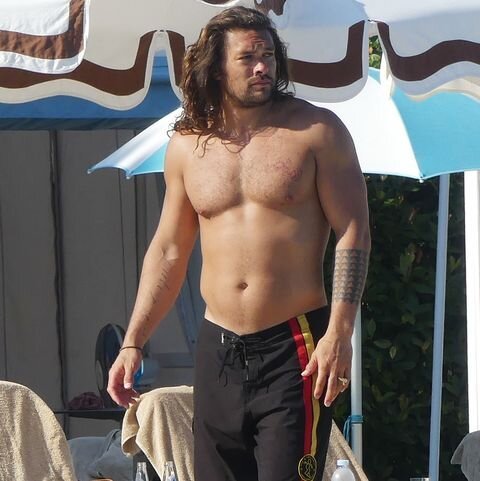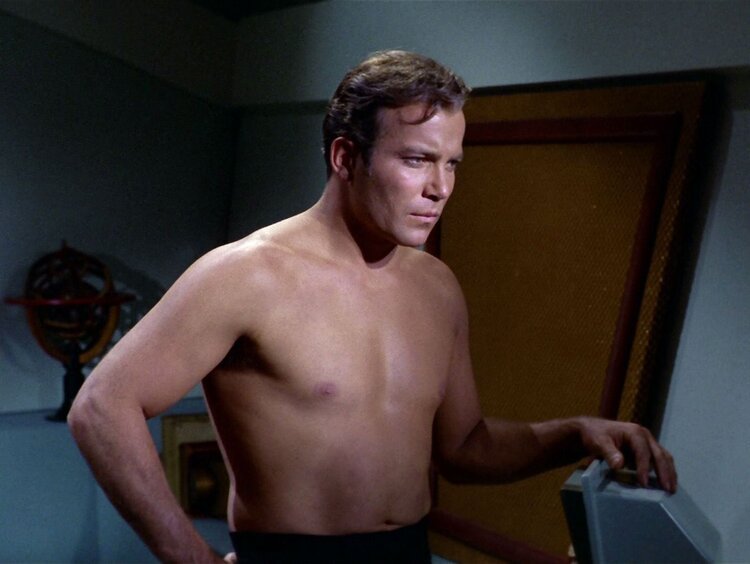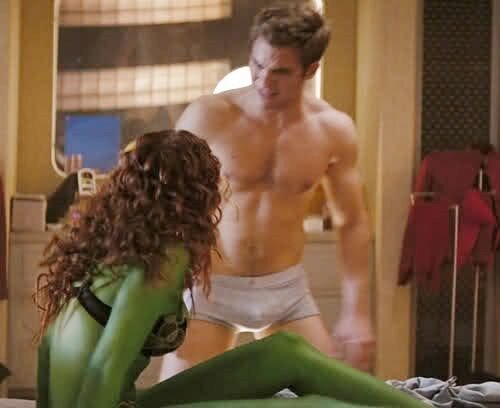Aquaman and Abs: Hollywood's Unrealistic Body Standards Now Focused on Male Actors
In 2019, “Aquaman” star Jason Momoa was the target of vicious body shamers on Twitter, with many claiming that the 39-year old had ‘let go’ and ‘gotten fat’ following the wrap up to his superhero feature film.
Tweets maligned Momoa for his new ‘dad bod,’ and he was called out for being “fat,” “unfit” and “uncharacteristic of a man his size.” He was being attacked, as women have been for decades.
Momoa stands at 6’4”, or 192cm, with a weight of approximately 214 pounds, or 97kg. In examining the difference between Momoa’s normal physique and Aquaman’s, sure, there’s a difference. In Aquaman, Momoa appears leaner, with a more defined set of abs as well as a slimmer waist. His biceps also appear more prominent. Beyond that, Momoa stands roughly the same. So how is it that DC’s arguably most beloved superhero fell victim to body shaming?
Why would going from a body that, to maintain, requires hours and hours of labor, as well as lighting and makeup enhancements, to one that would arguably still be the envy of many, cause body shaming?
The Hollywood Lie
Hollywood is notorious for buying into unrealistic body standards, and although the struggles that male actors endure to get that “perfect bod” are not as openly spoken about, they do still exist and there is a certain amount of danger to them.
Momoa’s Aquaman body, according to professional fitness trainers, is simply not sustainable. “Realistically, to get body fat that low, you're looking at four to six months of being really diligent with nutrition," bodybuilder Mike Lipowski commented in a Yahoo article discussing Momoa’s physique, “It's really difficult and it's not sustainable for the average person.”
In order to have such intensely defined abs, however, the answer lies not in nutrition or in diet, but rather, water consumption. In most shirtless scenes you see with actors where they show off their ripped bodies, the actors themselves are extremely dehydrated. Hugh Jackman has been fairly outspoken about his hellish experience playing Wolverine.
To get his Wolverine-esque physique, “Jackman said during an interview on the Late Show that he upped his water intake to about three gallons a day prior to shooting. Then, 36 hours before he was required to appear on camera shirtless, he stopped drinking anything at all. (It takes 100 hours, give or take depending on temperature, to die from dehydration.) That's in addition to three months of workouts before those scenes.”
Even Paul Rudd, who played Ant Man, said in regards to his own shirtless scene, “eliminate anything fun for a year, and then you can play a hero.”
An intense diet and extreme dehydration aren’t the only tools Hollywood uses to portray unrealistic body standards. Makeup and prosthetics are also used to push the narrative. “Ab contouring” and even tanning are very popular methods to making the muscles on an actor pop.
Always Changing, Never Perfect
William Shatner as Captain Kirk
What’s interesting is examining actors from the 60s, for example, and their shirtless scenes. I personally like to use Star Trek as a great example. James T. Kirk, the mancho, ostensibly, irresistibly attractive captain of the USS Enterprise doesn’t have the typical body one would expect of a hero these days.
The original Kirk, played by William Shatner, has a much bulkier body - larger chest and shoulders, and a smaller waist, but not as small as today’s actors might have. He would undoubtedly receive similar backlash to what Momoa is getting on Twitter today.
Chris Pine as Captain Kirk (the only shirtless photo)
Kirk is an interesting phenomena as a character. He’s a ladies man, always getting the girl in the end, and, as previously mentioned, a masculine icon for the show as a whole. In today’s day and age, you would assume that his body would reflect this: more muscular yet more slender.
This phenomena can be seen in the difference in body type in the two actors who portray Kirk. Chris Pine, who has played Kirk in the reboot of the series since the 2009 movie, has noticeably more defined abs, a smaller waist, a flatter stomach, and tighter shoulders.
Pine is also taller than Shatner, standing at 6’0” while Shatner is roughly 5’11”. Both men are athletic, but with the current body standards, Shatner likely would have never gotten the role to begin with if Star Trek had begun in the 2000s.
Men Are Increasingly Influenced by These Standards
According to the International OCD Foundation, “research indicates that between 1.7% and 2.4% of individuals meet criteria for body dysmorphic disorder. One study showed that about 22% of men with body dysmorphic disorder also met criteria for muscle dysmorphia.”
Hugh Jackman in Logan (2017)
Constant exposure to Hollywood bodies and Photoshop is only making these numbers worse and the disorders more intense.
Following the release of the 2006 film ‘300’, Google searches for “six pack abs” went up by, ironically, 300%. If you search actors like “Chris Hemsworth” or “Chris Evans” or “Daniel Craig”, usually within the top ten results you get a request for “Daniel Craig workout” or “Chris Hemsworth workout.”
While consuming media, even subjective and twisted media, is in of itself not inherently damaging to one’s mental health or physical awareness, if one accepts said media as it is, the unrealistic standards of the characters they strive so desperately to imitate end up becoming a losing battle.
Recognizing and understanding the not only difficult but also at times dangerous lengths that actors go to obtain their “eye candy” bodies can possibly help to prevent body and muscle dysmorphia, as well as eating disorders.
Author Note: Special thanks to Caroline, my media specialist, for inspiring and writing most of this article.
About Eating Wisdom and Drs Karin and Hannah
We are two PhD level Registered and Licensed Nutritionists whose passion is to help others escape diet culture and to learn to use their natural, innate Eating Wisdom to, finally, find peace with food, eating and weight.
Check out our course, Intuitive Eating: How to Escape Diet Culture and Become an Empowered Eater,. plus we have lots of info and handouts (including the original Hunger Fullness Scale) at our website, www.EatingWisdom.com. We also offer 1:1 nutrition therapy. Take advantage of our combined 40+ years of experience and reach out today!
© 2021 Karin Kratina, PhD, RD, LDN
Sources:
Landsverk, G. (2019, July 13). Actor Jason Momoa was dad bod-shamed, but an Aquaman physique is unsustainable. Experts share what it takes to make a six-pack 'pop.' Retrieved August 18, 2020, from https://news.yahoo.com/actor-jason-momoa-dad-bod-145421774.html
Loria, K. (2017, July 02). How the 'perfect body' for men went from chubby to skinny to muscular over the last 150 years. Retrieved August 18, 2020, from https://www.businessinsider.com/how-perfect-male-body-changed-2017?r=US
Olivardia, R., Blashill, A., & Hoffman, J. (2014, December 15). Muscle Dysmorphia. Retrieved August 18, 2020, from https://bdd.iocdf.org/expert-opinions/muscle-dysmorphia/
Rense, S. (2017, October 05). Hugh Jackman Put Himself Through a Hellish Regime for 'Logan'. Retrieved August 18, 2020, from https://www.esquire.com/lifestyle/health/news/a53724/hugh-jackman-logan-workout/


















